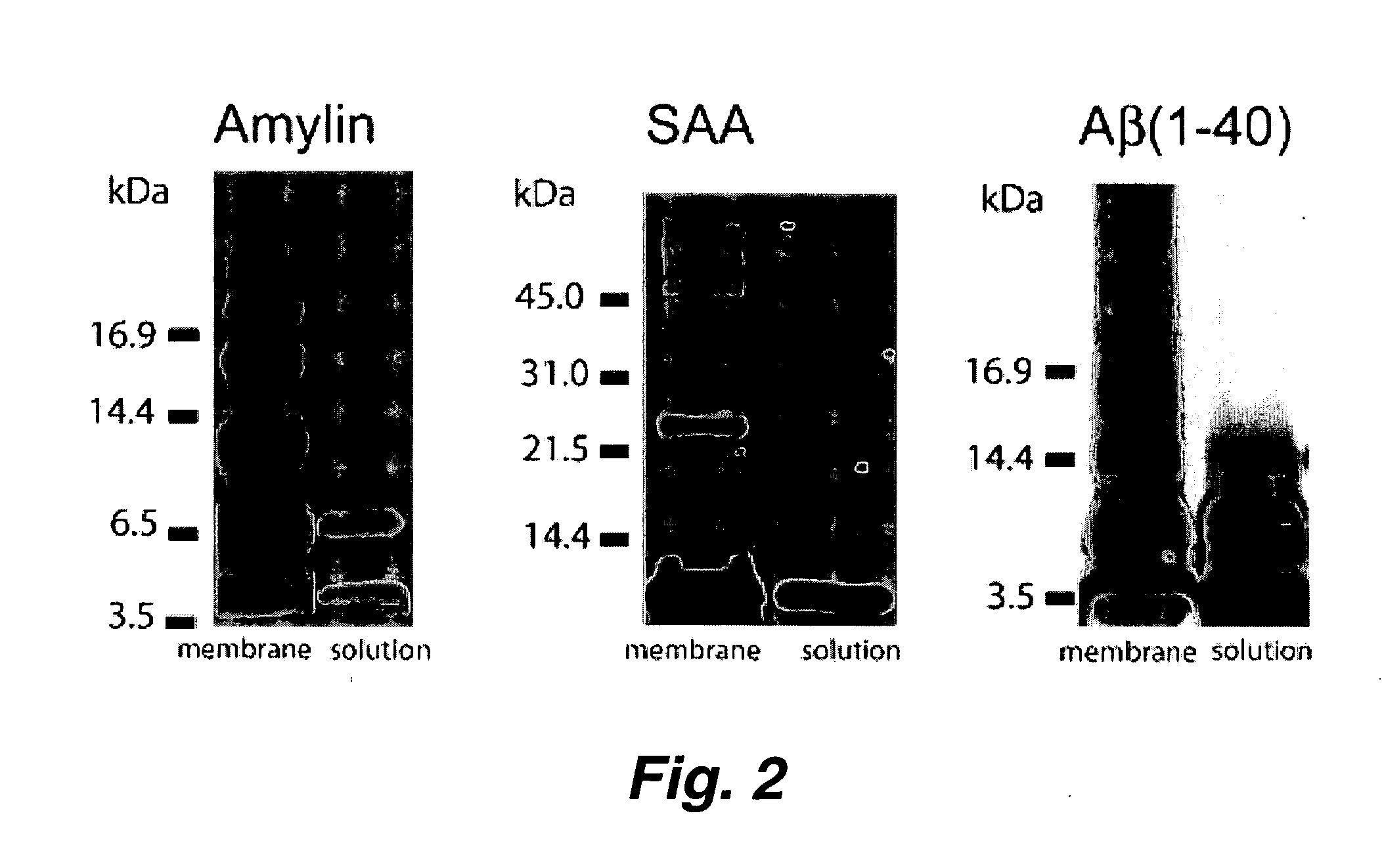Amyloid beta protein channel structure and uses thereof in identifying potential drug molecules for neurodegenerative diseases
a protein channel and protein technology, applied in chemical/physical/physical-chemical processes, peptides, energy-based chemical/physical/physical-chemical processes, etc., can solve the problems of inability to accurately identify the structure of the ion channel, inability to investigate the formation of ion channels in bilayers, and inability to achieve high-resolution imaging of reconstituted ion channels. , to achieve the effect of rapid, quantitative and specific assays
- Summary
- Abstract
- Description
- Claims
- Application Information
AI Technical Summary
Benefits of technology
Problems solved by technology
Method used
Image
Examples
example 1
[0100] Using liposomes reconstituted with AbP channels in the membrane, one can screen for compounds that block AbP channels. FIG. 3 shows an experiment that Zn2+ and an anti-AbP antibody (3D6) blocks the channels formed by the 40 residue AbP1-40 and inhibits the uptake of 45CA2+ into the liposomes via the AbP channels. FIG. 4 shows a similar experiments, in which the channels formed by the 42-residue AbP1-42 was blocked by and antibody, Zn2+, and Tris.
example 2
Amyloid Ion Channels: A Common Structural Link for
[0101] Protein conformational diseases, including Alzheimer's, Huntington's, and Parkinson's result from protein misfolding giving a distinct fibrillar feature termed amyloid. Recent studies show that only the globular (not fibrillar) conformation of amyloid proteins is sufficient to induce cellular pathophysiology. However, the 3D structural conformations of these globular structures, a key missing link in designing effective prevention and treatment, remain undefined as yet. Using atomic force microscopy, circular dichroism, gel electrophoresis and electrophysiological recordings, we show here that an array of amyloid molecules, including Aβ(1-40), α-synuclein, ABri, ADan, Serum Amyloid A, and amylin undergo supramolecular conformational change. In reconstituted membranes, they form morphologically compatible ion-channel-like structures and elicit single ion channel currents. These ion channels would des...
example 3
An on-Chip Detection System for Ion Channel Activity: AFM Imaging and Electrical Current Recording Through Bilayers Supported Over Microfabricated Silicon Chip Nanopores
[0131] In this example, we describe a silicon chip based supported bilayer system to detect the presence of ion channels and their electrical conductance in lipid bilayers. Nanopores were produced in microfabricated silicon membranes by electron beam lithography as well as by using a finely focused ion beam. Thermal oxide was used to shrink pore sizes, if necessary and to create an insulating surface. The chips with well defined pores were easily mounted on a double chamber plastic cells recording system allowing for controlling the buffer conditions both above and below the window. The double chamber system allowed using an AFM tip as one electrode and inserting a platinum wire as the second electrode under the membrane window, in order to measure conductance across lipid bilayers that are suspended over the pores....
PUM
| Property | Measurement | Unit |
|---|---|---|
| Thickness | aaaaa | aaaaa |
| Thickness | aaaaa | aaaaa |
| Angle | aaaaa | aaaaa |
Abstract
Description
Claims
Application Information
 Login to View More
Login to View More - R&D
- Intellectual Property
- Life Sciences
- Materials
- Tech Scout
- Unparalleled Data Quality
- Higher Quality Content
- 60% Fewer Hallucinations
Browse by: Latest US Patents, China's latest patents, Technical Efficacy Thesaurus, Application Domain, Technology Topic, Popular Technical Reports.
© 2025 PatSnap. All rights reserved.Legal|Privacy policy|Modern Slavery Act Transparency Statement|Sitemap|About US| Contact US: help@patsnap.com



